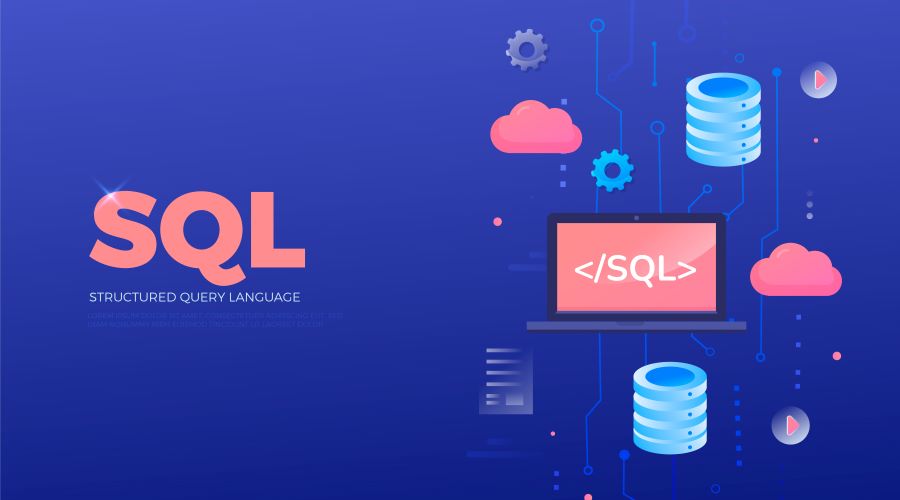Table of Contents Show
In the ever-evolving landscape of cybersecurity, SQL Injection (SQLi) remains a critical threat to web applications. Despite being one of the oldest forms of cyberattacks, SQL Injection continues to wreak havoc on organizations of all sizes.
This blog delves into the intricacies of SQL Injection, shedding light on what it is, how it works, the various types of attacks, and most importantly, how to prevent them. By the end of this comprehensive guide, you’ll have a solid understanding of SQL Injection and the measures necessary to protect your applications from such vulnerabilities.
What is SQL Injection?
SQL Injection, often abbreviated as SQLi, is a code injection technique that exploits vulnerabilities in an application’s software by manipulating SQL queries. SQL (Structured Query Language) is used to manage and manipulate databases. When an application fails to properly sanitize user inputs, it opens the door for attackers to inject malicious SQL code, allowing them to interfere with the application’s database queries.
At its core, SQL Injection targets the communication between a web application and its database. By injecting rogue SQL commands, attackers can bypass the authentication required, retrieve, delete, or modify data, and even execute administrative operations on the database. This makes SQL Injection a potent weapon in the arsenal of cybercriminals.
Types of SQL Injection Attacks
SQL Injection attacks can be classified into three main categories: In-band SQL Injection, Inferential (Blind) SQL Injection, and Out-of-band SQL Injection.
1. In-band SQL Injection
- Error-based SQL Injection: This technique leverages database error messages to gather information about the structure of the database. By crafting queries that intentionally produce errors, attackers can extract valuable information.
- Union-based SQL Injection: This method utilizes the SQL UNION operator to combine the results of a couple or more SELECT statements into a single result, enabling attackers to retrieve data from different database tables.
2. Inferential (Blind) SQL Injection
- Boolean-based Blind SQL Injection: In this approach, attackers send SQL queries that return true or false results based on the application’s response. By observing these responses, attackers can infer details about the database structure.
- Time-based Blind SQL Injection: Here, attackers execute SQL queries that cause time delays. The application’s response time helps attackers deduce whether their queries are correct, revealing information about the database.
3. Out-of-band SQL Injection
This less common technique relies on out-of-band channels, such as DNS or HTTP, to retrieve data. It is often used when in-band or inferential methods are impractical.
How SQL Injection Attacks Work?
The attack of SQL Injection typically follows a multi-step process. Attackers identify a vulnerable input field, craft malicious SQL queries, and execute these queries to manipulate the database.
Common Vectors for SQLi Attacks
- User Inputs: Forms, search boxes, and login fields are common targets for SQL Injection. Attackers exploit these inputs by malicious SQL code injection.
- URL Parameters: URLs that include query strings are also susceptible. Attackers manipulate these parameters to alter SQL queries.
- Cookies: SQL Injection can occur through manipulated cookies, which are then used in SQL queries.
- HTTP Headers: Attackers can inject SQL code into HTTP headers, such as the User-Agent or Referer.
Example of SQL Injection
Consider a simple login form where users input their username and password. If the application constructs SQL queries directly from these inputs without proper sanitization, an attacker could input admin’ OR ‘1’=’1 as the username, bypassing authentication. The resulting SQL query might look like this:
SELECT * FROM users WHERE username = ‘admin’ OR ‘1’=’1′ AND password = ‘password’;
Since 1=’1′ is always true, the query returns all rows in the users table, effectively granting the attacker access.
Real-World Examples of SQL Injection Attacks
SQL Injection has been the cause of numerous high-profile data breaches. One notable incident is the 2008 Heartland Payment Systems breach, where attackers used SQL Injection to compromise the company’s network, resulting in the theft of over 130 million credit card numbers.
Another example is the 2014 breach of the U.S. retailer Target, where SQL Injection played a role in the initial intrusion that led to the theft of 40 million credit and debit card records.
These incidents highlight the devastating impact of SQL Injection, underscoring the need for stronger security measures.
SQL Injection Prevention Techniques
Preventing SQL Injection requires a multi-faceted approach. Here are some effective techniques:
1. Input Validation and Sanitization
- Whitelisting vs. Blacklisting: Whitelisting involves defining a set of acceptable inputs, whereas blacklisting blocks known malicious inputs. Whitelisting is generally more secure.
- Escaping Special Characters: Properly escaping special characters in SQL queries prevents attackers from injecting malicious code.
2. Prepared Statements and Parameterized Queries
- Prepared statements separate SQL code from data, preventing attackers from altering the structure of queries. Parameterized queries ensure that inputs are treated as data rather than executable code.
3. Stored Procedures
- Stored procedures are precompiled SQL statements stored in the database. By using stored procedures, developers can enforce consistent security practices and reduce the risk of SQL Injection.
4. Web Application Firewalls (WAF)
- WAFs filter and monitor HTTP requests, blocking malicious traffic and protecting against SQL Injection attacks.
5. Regular Security Audits and Code Reviews
- Regularly reviewing code and conducting security audits helps identify and remediate vulnerabilities. Automated tools can assist in this process.
6. Use of ORM (Object-Relational Mapping) Frameworks
- ORM frameworks abstract database interactions, reducing the likelihood of SQL Injection by automatically handling input sanitization and query construction.
Best Practices for Secure Coding
Adopting secure coding practices is essential to prevent SQL Injection. Here are some guidelines for developers:
- Always validate user inputs: Ensure that all user inputs are validated and sanitized before being processed.
- Use prepared statements and parameterized queries: Avoid dynamic SQL queries that concatenate user inputs.
- Implement least privilege principle: Restrict database permissions to the minimum necessary for the application to function.
- Keep software and libraries up-to-date: Regularly update software and libraries to patch known vulnerabilities.
- Conduct regular security training: Educate developers about the latest threats and coding practices that are secure.
Tools for Detecting and Preventing SQL Injection
Several tools are available to help detect and prevent SQL Injection:
- Acunetix: A web vulnerability scanner that detects SQL Injection and other security issues.
- SQLMap: An open-source tool for detecting and exploiting SQL Injection vulnerabilities.
- OWASP ZAP: A widely-used open-source web application security scanner that identifies SQL Injection vulnerabilities.
These tools automate finding and fixing vulnerabilities, making it easier for developers to secure their applications.
Conclusion
SQL Injection remains a persistent threat to web applications, but with the right knowledge and tools, it can be effectively mitigated.
Developers can protect their applications from this common and dangerous attack by understanding how SQL Injection works, implementing robust prevention techniques, and adopting secure coding practices.
Continuous learning and vigilance are key to staying ahead of cybercriminals and safeguarding sensitive data.
More Readings:










